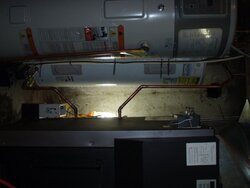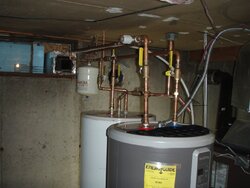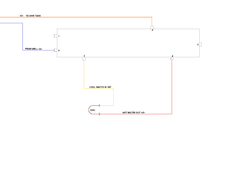I'm in the planning/parts buying stage of putting a buffering tank ahead of my electric DHW tank to preheat the water. The plan is to mount a tank next to my Yukon Husky furnace, run lines to a coil in the furnace, circulate water through the coil by gravity. But I'm not sure if I want/need to mount the buffer tank vertical or horizontal. I'm sure there are probably some "rules of thumb" about getting water to circulate by gravity as far as, length of pipes, angles, (rise/run). Does the "hot" side have to have more "rise/run than the cold return side? Can the cold return go uphill from the tank to the coil or does it have to run downhill?
BTW, my buffer tank is an old galvanized pressure tank 5' x 12".
I would tie into the DHW tank directly, but it is 20' away and would be problematic to move.
I am more than willing to check out some old threads or links if you can point me in the right direction. I didn't find anything quite like this (other than some good ole boy on U tube that hung a DHW tank on its side above the furnace) when I searched for info. Anybody have any advice or suggestions? Thanks in advance!
BTW, my buffer tank is an old galvanized pressure tank 5' x 12".
I would tie into the DHW tank directly, but it is 20' away and would be problematic to move.
I am more than willing to check out some old threads or links if you can point me in the right direction. I didn't find anything quite like this (other than some good ole boy on U tube that hung a DHW tank on its side above the furnace) when I searched for info. Anybody have any advice or suggestions? Thanks in advance!





